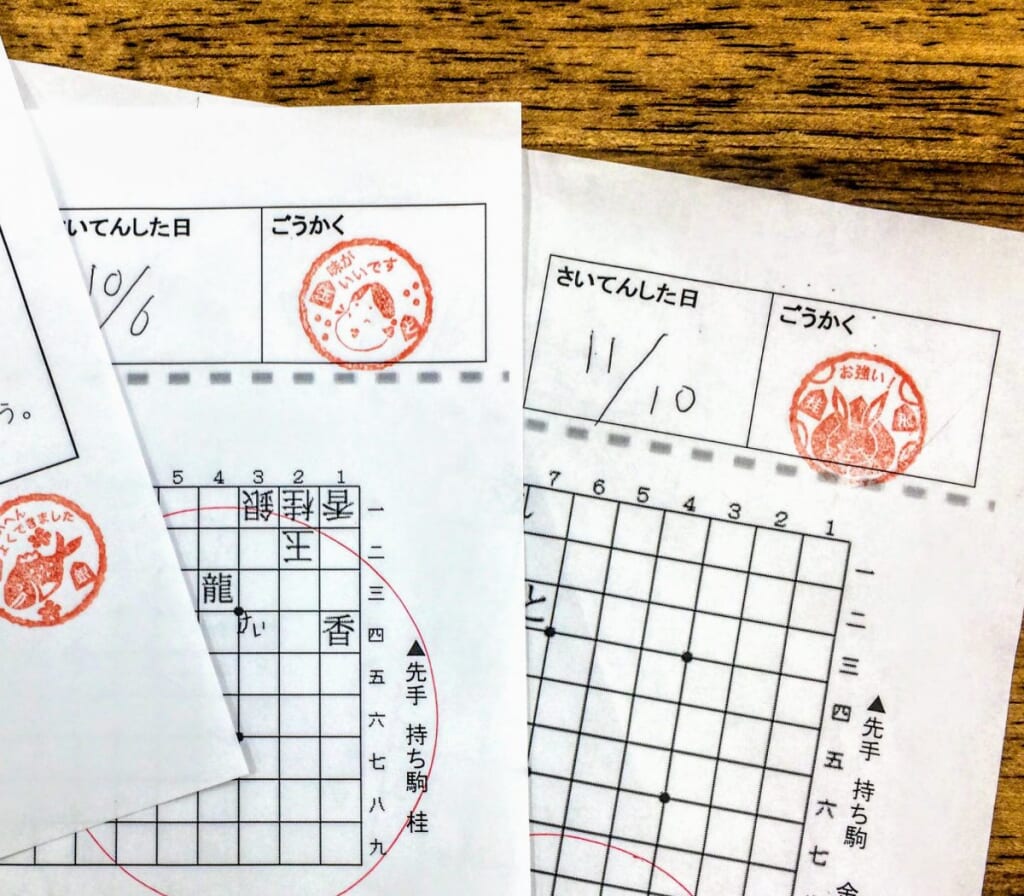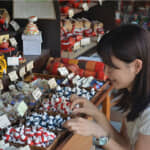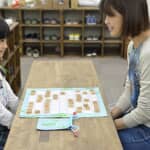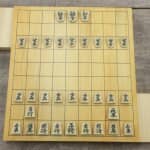25 January 2019
Five Points That Show your Children’s Improvements in Shogi
Suppose your children have just started to learn Shogi. You may be wondering if your children are actually improving Shogi. Especially, for mothers who are not familiar with Shogi, it’s a challenging to know their children’s Shogi abilities by playing a game together.
Even so, getting to know children’s growth in any field is great thing to parents. That’s the way parents are.
I often receive comments from my students’ mothers, and one of which said, “My son is asking Santa a Shogi book of mate problems for this Christmas. He asked an anime figure last year. In only one year, he matured remarkably.” I was really glad to read it.
I will introduce the five points which tell your children’s improvements in Shogi. Today’s article is for moms who are not familiar with Shogi.
1. Certification

i-tsu-tsu Shogi Classes Give Children Certification
Not a few Shogi classes or Dojos give certifications corresponding to the level of children’s abilities. The rules differ from an organization to an organization, but all give a certification when a child shows his/her improvement in Shogi. If you notice your child has a new certification, it definitely tells your child has improved his/her skills in Shogi.
If the class or Dojo doesn’t have a system of certifications, you may ask your child directly, “What level are you in?” Please be reminded not to ask too often to put a pressure on them.
2. Preference for Books May Change

Preference for Books May Change, As Children Develop Shogi Skills
The following is what I heard from Mr. Odagiri, who is a famous Shogi instructor and mainly teaches to children.
Kiyukan where he teaches Shogi has a small library to keep Shogi books. Books which Shogi beginner children prefer to read are Shogi animes or anime like instructions. As children improve their skills, they start to read more difficult Shogi books.
Basically, Shogi books have a lot of difficult expressions and terminologies which may be hard to read for small children. However, I suppose they can gain the knowledge of Joseki, standard move sequences, firsthand through reading Kifu notations posted in those books. They seem to infer what the Kifu notations are telling.
Once children get interests in and aroused by difficult books, their improvements in Shogi are definitely promised.
3. Careful Handling of Shogi Equipment

At the End of a Year, We Polish Pieces in Thanks for Them
I believe that children will cultivate not only their skills but also their mind through learning Shogi.
One of those improvements can be seen in their attitudes toward Shogi equipment. If you have a chance to notice children have get to put away Shogi pieces, you may also notice they have improved themselves. If they count how many pieces they have, you can’t ask for anything more!
The attitude towards equipment is equal to the one to Shogi itself. You can see what I am talking in professional players’ attitudes during games. No professional players don’t handle Shogi equipment carefully.
It can be said that careful handling of Shogi equipment is the first step to improve one’s skills in Shogi. Children who have learned to count pieces before putting away will improve their skills in the foreseeable future.
4. Shogi Terminologies in Daily Conversation

As Shogi Grows on Children, They Would be Tempted to Use Shogi Terminologies
i-tsu-tsu staff members unknowingly use Shogi terminologies as an everyday language and usually first realize it after being told so.
Children’s using Shogi terminologies in daily conversation tells you that Shogi has been integrated into their everyday lives.
The proverb goes, “What one likes, one will do well.” The same is true of Shogi. The more you have come to like Shogi, the more you tend to use Shogi terminology on a daily basis. Frequent use of Shogi terminologies could be a proof of your child’s/children’s improvement in Shogi.
5. Look Different

Children Look Different When They Play Shogi Thoughtfully
I noticed my son’s growth to see his face while he played a Shogi game. He is just a baby at home, but he gives a very serious look during a tournament. To see that, I am always amazed at his improvements.
I am often said that I have a stern look on my face during a game. You tend to take a serious look, when you concentrate on things. I pretty much concentrate on a game. That being said, I play a game with a stern look, I think.
Children who have just started to learn Shogi can barely move pieces while remembering how to move each piece and they are likely to lose their concentrations easily. They often show a bored look on their faces.
When children take a serious look on their faces, you should realize that they are not just play a game, but thoughtfully. Regardless of the result of a game, this indicates clearly that children have got better at Shogi.
Incidentally, I said that my son shows different expressions on his face, which he never shows at home, during tournaments. You may find that your child/children looks/ look sharp, playing a game. I would highly recommend that parents also go to a tournament venue to cheer up and observe your child/children. You will surely have memorable moments. Be sure not to give them advice during a game!
I discussed how to learn children’s improvements in Shogi. Most of them are subtle changes, but you may find them within various aspects of your daily lives. I am sure you will be happy to see them.
We have posted several articles on this site which answer to the question asking what children can develop through learning Shogi. You can also find a variety of attractive Shogi products on our online shop. Please take a look at our website!



